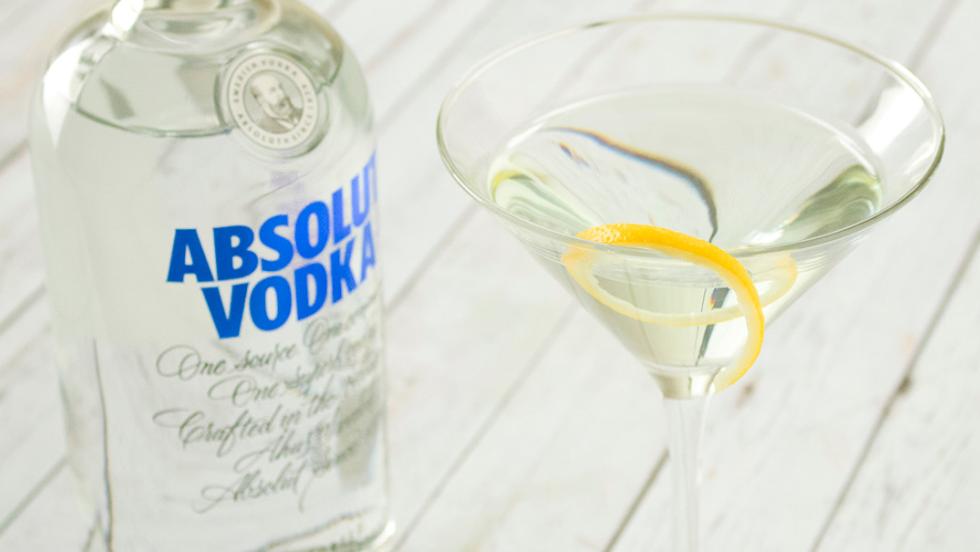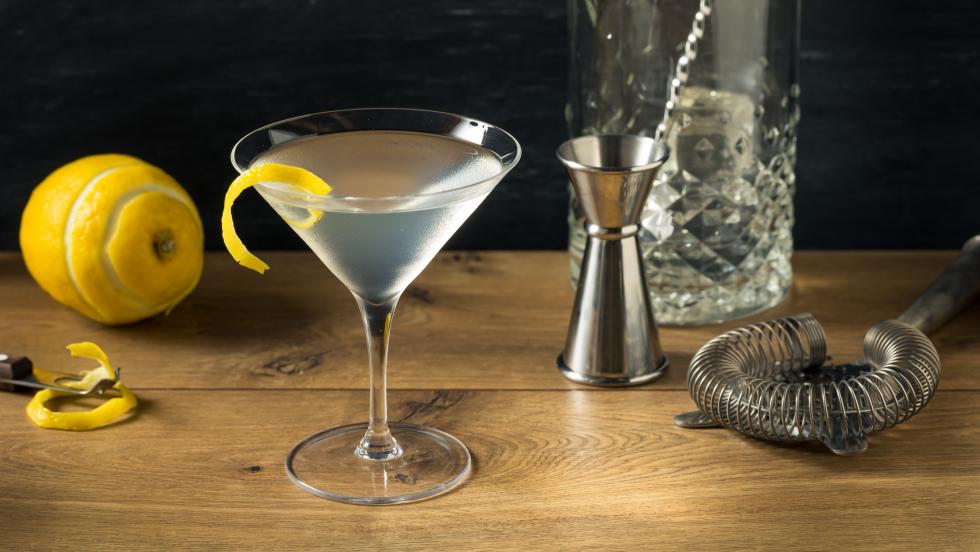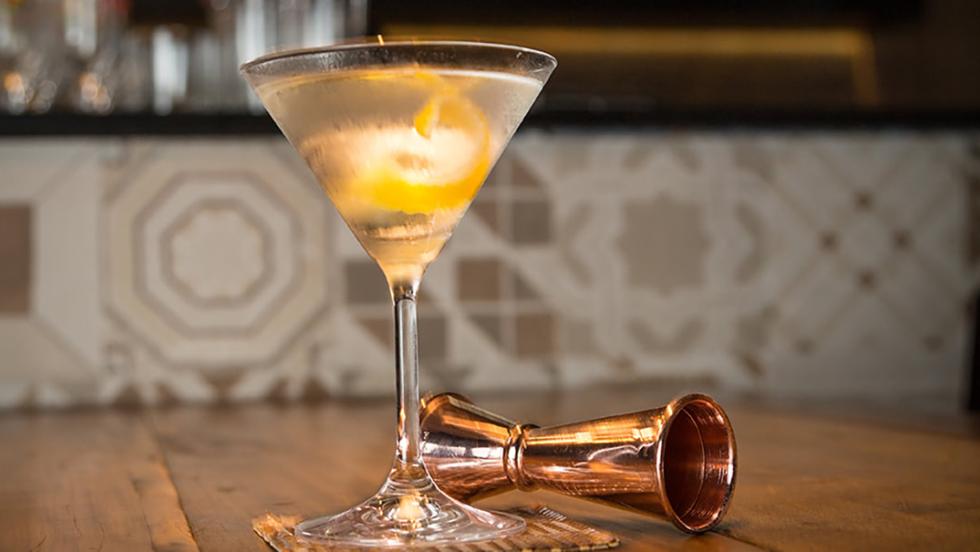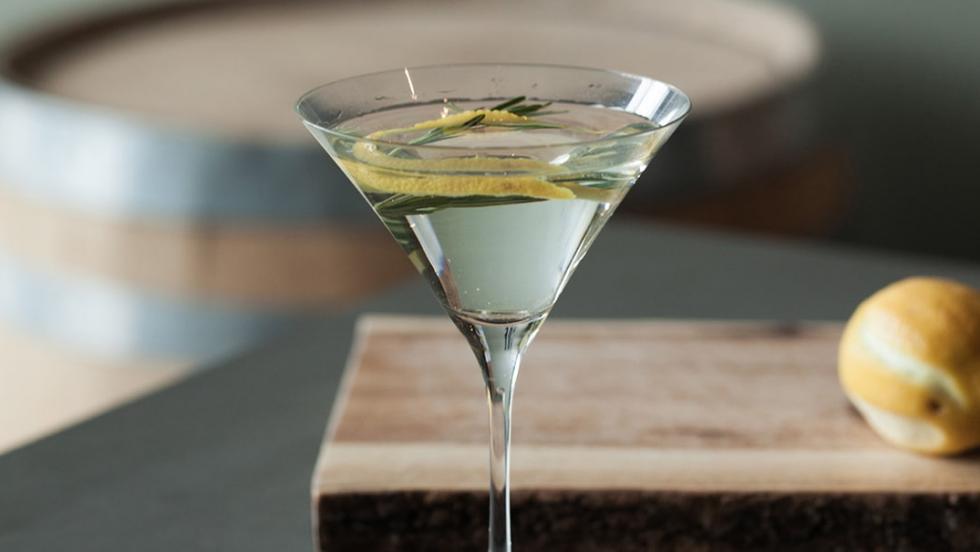In a world of complicated cocktails, the Martini is as simple as it gets but it can be so complex!
In a world of complicated cocktails, the Martini is about as simple as it gets. Gin + Vermouth = Martini.
Despite having only two ingredients, the Martini can be so complex because both the gin and vermouth are a tapestry of fruit and botanical flavors that will interact in wild ways with each new combination of the two. Because of this, ratios should be experimented with to highlight or quiet the dominant notes of the other.
The baseline to experiment with should look something like this:
3 Parts Dry Gin
1 Part Dry French Vermouth
Olive garnish
Shaken or stirred? Consensus skews heavily towards stirred, not shaken. Shaking will oxidize the vermouth/wine and will produce a cloudier and less appealing cocktail.
Instead, use a large mixing glass and gently stir the ingredients over large, uncrushed ice cubes. Strain and pour the mixture into a chilled wide-rimmed glass, garnish with either an olive or lemon twist.
For the standard Dry Martini, you’ll need a dry gin, sometimes called “London dry gin”. Essentially a neutral spirit that has been infused with several botanicals, with juniper berries usually the most prominent.
Here are some tasting notes from some of the most recognizable brands:
Tanqueray Gin: Coriander, and especially strong juniper.
Plymouth Gin: Citrus playing the lead, with juniper, coriander, and cardamom playing backup.
Hendrick’s Gin: Notes of cucumber and rose petals. Juniper here is subdued.
Bombay Sapphire: Dominated lemon and juniper.
But what if you want to go old school? From The Fine Art of Mixing Drinks (1948), David A. Embury suggests using yellow, or aged gin instead of the clear spirit most Americans are familiar with. This isn’t too crazy, as the original recipes called for Old Tom Gin, an older off-sweet style made before the invention of the column still.
Barr Hill Tom Cat Gin: Mellower, notes of honey and vanilla mingling with the fruitier botanicals.
Ransom Old Tom Gin: Barrel-aged, something like a hybrid between a whiskey and a gin.
Bimini Barrel Reserve Gin: Aged, but dryer than the Old Tom style gin.
Bol’s Genever: And even older and even sweeter style.
Vermouth is a fortified, sweetened, and spiced wine, historically a pre-dinner aperitif. For a traditional Dry Martini, you’ll want dry vermouth, preferably French. When choosing a vermouth, look at the profile of your gin and decide if you want to accentuate similar flavors or make an amalgamation of complementary flavors.
Dolin Dry Vermouth: Sharp, clean, slightly floral.
Martini Extra Dry Vermouth: Slightly sweeter than Dolin. Slightly acidic, notes of apple and peach.
Noilly Prat Dry: Slight acidity, orange zest, and clove. The “Martini De Luxe” calls for this brand in The Fine Art of Mixing Drinks (1948).
Cocchi Americano: Not a vermouth per se, but an aromatized wine with an addition of Quinine, the flavoring agent in Tonic Water. Used in place of "Kina Lillet", a quinine-based wine that is no longer available, and a key component of the Vesper Martini from the Bond franchise. Off-sweet with bitter notes.
If you want something sweeter, you can go back a few steps in the evolution of the Martini and use sweet vermouth. In particular, the older recipes call for Italian vermouths, such as Martini Rosso.
Martini Rosso: Cinnamon, nutmeg and anise.
Once you’ve found a flavor combination you like, you can alter its balance by modifying the ratio of gin to vermouth. If you'd like your Martini to be less sweet, use less vermouth.
In The Fine Art of Mixing Drinks (1948), David A. Embury suggests, "After extensive experimentation, I have arrived at the ratio of 5 to 1 as the proportion most pleasing to the average palate. Personally, I like a ratio of about 7 to I even better, and I know some who prefer a ratio as high as 10 to I. Try out different mixtures and ascertain which you like best. I have found, however, that everyone who likes mixed drinks at all likes a 5-to-I ratio with the right vermouth and with the right gin."
If you prefer your Martinis to be on the sweeter side, a ratio of 1:1 gin to vermouth would result in a much sweeter cocktail (also known as “The Perfect”).
If the Martini was originally arguably a bastardized version of the Manhattan cocktail (a whiskey drink), why limit ourselves to gin? While any spirit could be substituted, we recommend light spirits that will not overpower the vermouth.
Vodka: Completely neutral flavor. Vermouth will become louder and will need to stand on its own.
Tequila: Earthy notes, and a bit of white pepper. If you use an aged tequila (Reposado or Anejo), you’ll get some caramel and vanilla as well.
Rum: White rums will add sweetness, and a bit of spice. Traditional Jamaican rums with “rum funk” will add fruity esters (think banana peels). Spiced rum will compete heavily with the vermouth and should be avoided.
Finally, we’ve come to the subtle additions that can be added in small quantities to change the final cocktail. Remember that a little goes a long way, and more than a few dashes will easily overpower the balance of flavors in the base cocktail.
Simple Syrup: Added sweetness. Historically, the original recipes called for “Gum Syrup”, a similar form of sweetener.
Orange Bitters: Counterbalance the sweetness of the vermouth, and add citrus notes. It might be a necessary addition for sweeter Martinis.
Orange Curacao: Citrus notes and added sweetness. Adds complexity and offsets drier Martinis.
Chartreuse: A blend of over 130 different herbs and spices. Adds pungent earthy, vegetal notes, and a touch of sweetness. Offsets drier Martinis.
Absinthe: Heavy on the fennel and anise. Much more dry than Chartreuse. Offsets sweeter Martinis.
And remember, the garnish is much more than just an aesthetic choice. While it may seem arbitrary, the salt in the olive garnish acts as a flavor enhancer, reducing bitterness while increasing sweet, sour and savory flavors.
If you want to go old school, a twist of lemon will liven a Dry Martini with brighter notes from the citrus. Lime could be used but will be more acidic and bitter than a lemon.
Lastly, if you wanted to make a variant of the Martini called a Gibson, use a small pickled onion garnish.

Ingredients:
2 oz Absolut Vodka
½ oz Dry Vermouth
1 Twist Lemon (garnish)

2.5 oz Beefeater Gin
0.5 oz Dry vermouth
1 dash Orange bitters

2 oz Bombay Sapphire Gin
0.5 oz Grey Goose Vodka
0.25 oz Cocchi Americano
Lemon Twist

Ingredients:
2 oz Cold River Vodka
Rinse Dry Vermouth
1 Lemon Twist
1 Sprig Rosemary
If you want to learn more about the martini, see our previous blog post - History of the Martini
If you choose to drink alcohol, Maine Spirits asks that you drink responsibly.
If you think you have a drinking problem, you should seek professional help.
Learn More